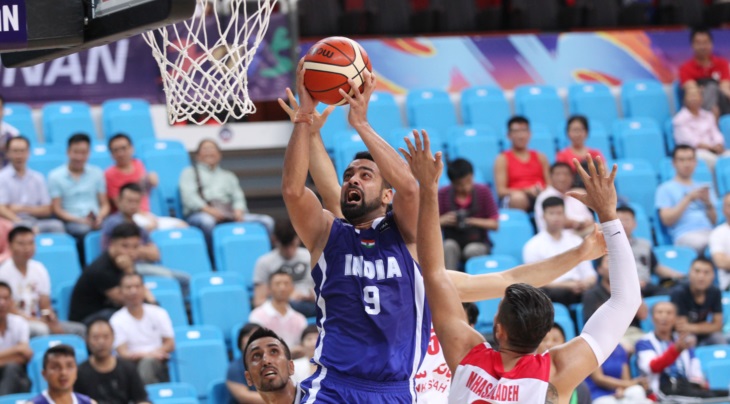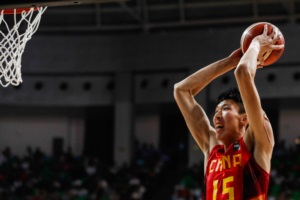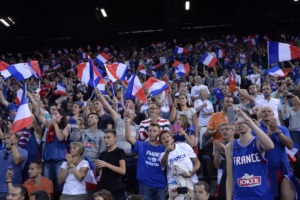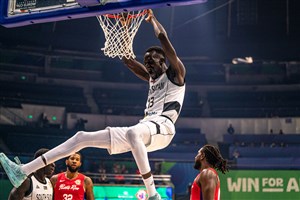
A taste of the future
CHANGSHA (Paulo Kennedy’s View from Downunder) - What have I been up to this week? I’ve been in China getting a taste of the future for Australian and New Zealand basketball from the television commentary box.
Changsha-Hunan is home to the 2015 FIBA Asia Championship, and watching this tournament there’s been a lot to like just two years out from the combination of the Asia and Oceania zones.
Firstly though, one thing I don’t like is the suggestion the Boomers and Tall Blacks play in the FIBA Asia Championship from the next tournament onwards.
The merger of the two zones for FIBA Basketball World Cup qualification is a superb idea, exposing Asian teams to higher-quality opponents and exposing the main Oceania duo to more cutthroat international games.
But there is such tradition associated with the Asian championship, and I think once every four years it should be left as is, rather than bringing in two new nations from outside the continent who could shift the balance of power significantly.
That’s it for the negatives from me though, because having covered this tournament for the past three editions, I have no doubt Asian basketball is making slow but steady progress.
Chinese check-in
One of the main concerns in recent times was the direction of China post-Yao Ming.
Not only have they not got the results, the quality of basketball they’ve produced has been dubious, and they have seemed to lack any definitive style.
Perhaps the biggest issue was the lack of quality guards, leaving way too much for Yi Jianlian to do.
The light at the end of the tunnel was a quartet of seventh-place finishes at underage world championships between 2010 and 2014.
Prior to that, no underage Chinese men’s team had ever finished inside the top eight on the global stage, so we waited and hoped it would translate to senior level.
Well, it’s only three games in, but the story of this FIBA Asia Championship for the host nation has been playmakers Guo Ailun and Zhao Ji Wei, who played at the 2010 and 2012 FIBA U17 World Championship respectively.
You talk about needing an identity, that pair have been the undisputed leaders of the intense pressure defence coach Gong Luming seems to unleash after half-time.
Guo has been a standout at both ends, take the time to watch him play. The 21-year-old averaged 22.4 points, 5.5 assists and 4.6 boards at the 2010 FIBA U17 World Championship, and I think he can become a Chinese Sergio Llull with his strength, speed and all-court play.
Five of this China team played in those four successful junior teams – including imposing 2.17m centre Zhou Qi - with capable small forward Ding Yanyuhang making it half the roster aged 22 or under.
Regardless of whether they secure gold this year, it seems a new power is building, and this time it’s not around the talents of just one man.
Getting India
Another team making strides through development of youth is India.
Four years ago in Wuhan the burgeoning basketball nation lost to Malaysia by four points, while on opening night this time around they blitzed the south-east nation by 29.
In 2013, eventual champion Iran spanked the sub-continental team by 44 points, a margin India halved on Day 2 here with an impressive display.
Apart from scorelines, the Indian players now move and react like a genuine basketball team, when not long ago their play could only be described as immature in basketball terms.
Like China, India have made progress through youth.
Classy playmaker Vishesh Bhriguvanshi is playing his fourth FIBA Asia Championship, athletic big man Amritpal Singh is in his third, as is do-everything-man Amjyot Singh, and it shows.
If 2.18m NBA draftee Satnam Singh Bharama can grow into his body that will make four quality players under 25. For me there are two important steps India needs to take to genuinely enter Asia’s second tier.
The first is to realise they are long and athletic, and turn their defence into their best weapon. As it is, they play D with energy at times, but become too reactive at others.
The second is to figure out how to get their role players more involved, so it isn't left up to their guns to make things happen every time down the floor.
Welcome Palestine
It would be remiss of me not to mention the amazing performance of Palestine in their first ever FIBA Asia Championship contest.
After trailing by 16 points early in the second quarter against reigning silver medallist the Philippines, the men from the Middle East produced a stunning, two-point upset, capped by Sani Sakakini’s block on Andray Blatche’s attempted match-winner.
Between Sakakini, Imad Qahwash and former University of Minnesota swingman Jamal Abu Shamala, Palestine have a quality ‘big three’, and with two wins carrying over into the second round, they have one little pinky toe in the quarter-finals.
What a story that would be.
Farewell Lin
I’m almost out of words, but words can’t really describe the brilliant, graceful play of Chinese Taipei star Lin Chih-Chieh, who is sadly retiring at the end of this competition.
The Changsha crowds adore Lin, many fans consider him the best swingman in Asian basketball and some in his homeland rate the 33-year-old above Jeremy Lin.
It’s been a privilege to call his final few games on the international stage, and I highly recommend you watch this great montage of Lin.
Paulo Kennedy
FIBA
FIBA's columnists write on a wide range of topics relating to basketball that are of interest to them. The opinions they express are their own and in no way reflect those of FIBA.
FIBA takes no responsibility and gives no guarantees, warranties or representations, implied or otherwise, for the content or accuracy of the content and opinion expressed in the above article.






















